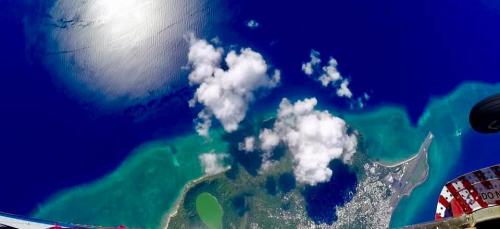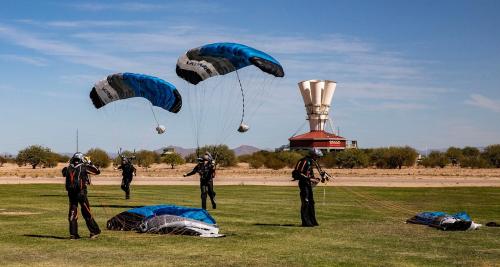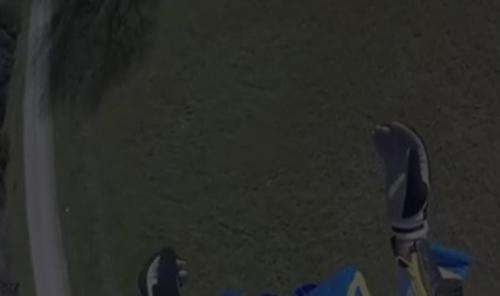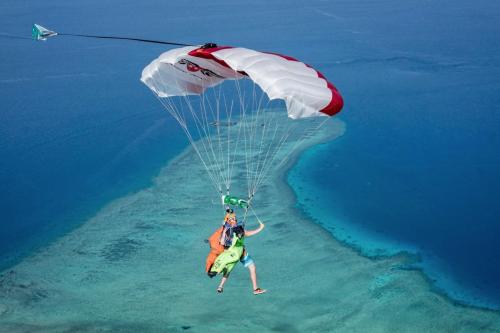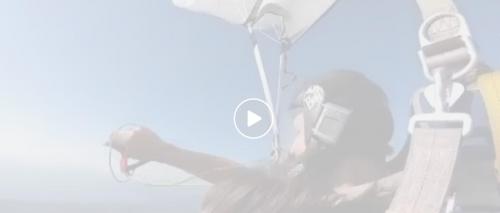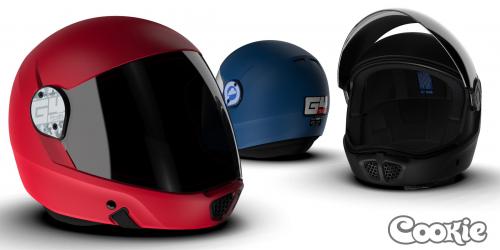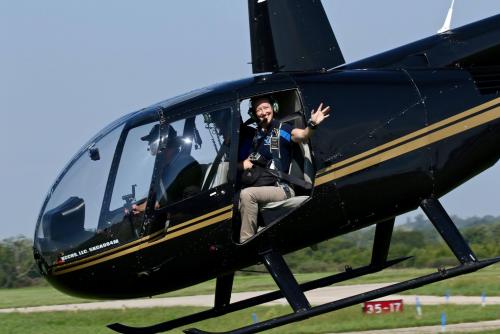Thanks to Vewuha Parachutisme, Your #SkydivingVacationGoals Just Upleveled
Got the almost-wintertime blues? If you’re in the northern hemisphere, that’s a very likely yes. Don’t despair, dear reader. We’re here to push a few daydreams your way. Perhaps, we’ll even put a brand-new DZ on your bucket list: One where you can jump onto a sandbar deep in a turquoise expanse of ocean, then hop on a boat and pootle back to an island, then wiggle into a swimsuit and make friends with sea turtles, then tuck into a beach barbecue with a bevy of new friends. Can you think of a sweeter escape from your snow shovel? Yeah… neither can we.
The sandbars and sea turtles in question are, interestingly, technically located in France -- albeit a very remote handful of France. They’re in the island country of Mayotte -- part of the Comoros archipelago, located in the northern Mozambique Channel off the coast of Southeast Africa. You’ll find it on the map tucked between Madagascar and Mozambique. Mayotte was purchased by France in 1841, becoming an overseas department of the country significantly more recently (in 2011). These days, it’s touristed mostly by French sunseekers and scuba divers; soon, with a lot of work and a little luck, it’ll be on the sport-skydiving map.
There is, of course, a story there.
The story starts, as so many good stories do, in Africa. It involves Karen and Steve Saunders, two adventuring British jumpers who enjoy power-couple status: Karen, as a well-known BPA Advanced Rigger and Examiner (well known as the rigger behind Tom Cruise in his latest Mission Impossible Film “Fallout”; as well as a popular FS coach); Steve, as the owner and principal instructor at Complete Skydiving Solutions. (Steve has been a skydiving instructor for many years, a BPA instructor examiner and -- notably -- one of the few expats to hold S&TA Status with the USPA.)
Steve and Karen were working at a dropzone in Kenya in December of 2018 when they met a Comorian tandem instructor named Anly AD. After a few weeks sharing the dropzone life, Anly approached Steve and Karen. He told them he was keen to eventually get a full-time dropzone going in his home country, but that he was (wisely) going to start by planning destination events. He was already all-in committed to the task, having already started to work his full gamut of connections to lay the groundwork. It already had a name: Vewuha Parachutisme. And he wanted their collaboration.
Before these conversations, neither Saunders had heard of Mayotte. It’s off the general tourist map, after all, mostly drawing outside interest for its unspoiled coral reefs, not its sky.
“We thought -- okay, that’s a nice dream,” Karen says, “and then we looked it up. We were floored.”
When Anly asked if Karen and Steve could be available to come out in March of 2019 to help with Mayotte’s first contact with skydiving, they couldn’t agree fast enough. When they landed, their initial impression was in perfect alignment with the photos they’d seen.
“When you’re there, you can hardly believe how beautiful it is,” Karen enthuses. “You just stand there in awe. Volcanoes -- craters -- lakes -- jungle -- beaches -- it is phenomenal.”
They couldn’t stand around for long, of course. Anly had laid all the groundwork he could, but the trio had their work cut out for them. There was no skydiving infrastructure in place. In fact, the country had never seen a single recreational skydive.
The dropzone is based on the country’s single municipal airport: the airport code for which is, charmingly enough, “DZA.” Anly had partnered up with a little flying school based on that airfield, renting a secure space. The first big task, then, was going to be educating Air Traffic Control -- working skydiving operations smoothly between the six-or-so jets a day coming in and out, as well as the military and general aviation workload, none of which had any experience accommodating skydiving. The learning curve was steep, but Steve’s previous experience proved invaluable; under his tutelage, DZA’s ATC learned the system and figured out the delicate timing. Once ATC was on board, the crew tackled the rest of the logistics head-on.
This first event was, in essence, a debutante ball to introduce skydiving to the island of Mayotte. Knowing how challenging it was going to be, Steve, Karen and Anly paced themselves. They organized five or six loads a day to facilitate specialist tandem jumps for regional dignitaries and military officials onto Mayotte’s surrounding islands and sandbars. To add a fun dimension to the challenge, Sébastien Chambet (and the rest of the French freefly team GoodVibes) joined the madness to shoot documentary footage for the French tourist board. The far-flung landing areas required significant boots-on-the-ground work to manage; some of them required hour-plus retrievals; the variables were stacked like Jenga pieces.
Luckily, Karen and Steve are stone-cold pros -- and decidedly British.
“Those were long days,” Karen grins, “But we just packed up a bunch of flags, tents and coffee and got it sorted.”
The team’s efforts were rewarded with resounding success. The team celebrated the excellent first impression they’d made with a sunset skydive into a remote, uninhabited island for a barbeque, a super-memorable party and an overnight tent-camp on the beach.
This coming spring -- exact dates to be announced -- will see Mayotte’s first skydiving invitational event. The event itself will be hosted by Anly the DZO, with safety overseen by Steve and Karen, organised by world-class skydivers Milko Hodgson and Sian Stokes. A dozen experienced jumpers will be invited for a week of jumping and exploring, staying among the island’s small selection of boutique hotel properties and sampling the hiking, dining and watersports that make up Mayotte’s idyllic tourist landscape. (Let your thoughts wander to a leisurely afternoon swim with dolphins and turtles, and you’ll have the right idea.)
As if the nascent Vewuha Parachutisme didn’t have enough unique characteristics already, there’s another important one to consider: In a region that has historically seen dangerous, unethical skydiving operations set up by greedy expats, it stands tall and proud.
“Safety is already a foundation of the culture here,” Steve notes, “because this is the owner’s home, and it’s his priority. He is not money-oriented. He’s passionate about bringing skydiving to his own country, and he wants to do it right.”
As Anly and the Vewuha Parachutisme team make ready for the coming year -- and continue to lay the groundwork for a permanent dropzone -- they’re getting more and more excited for the place’s potential.
“This is the kind of place you really have to see to believe,” Karen grins. “It is beyond incredible.”


